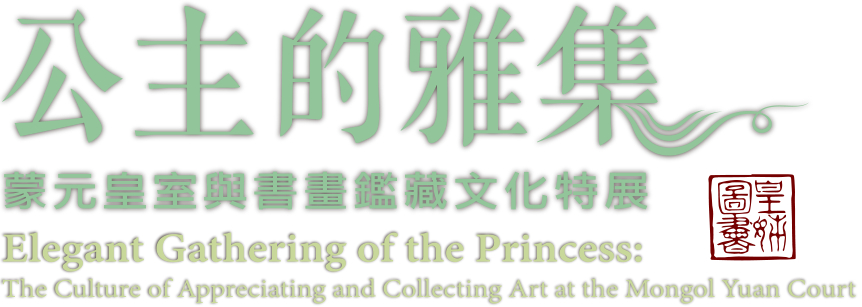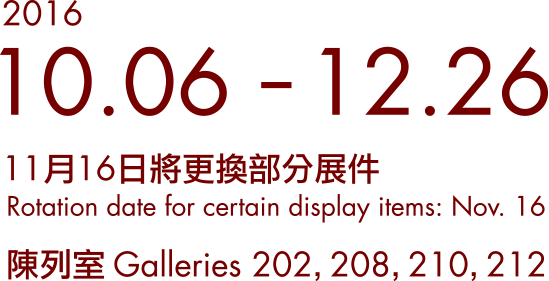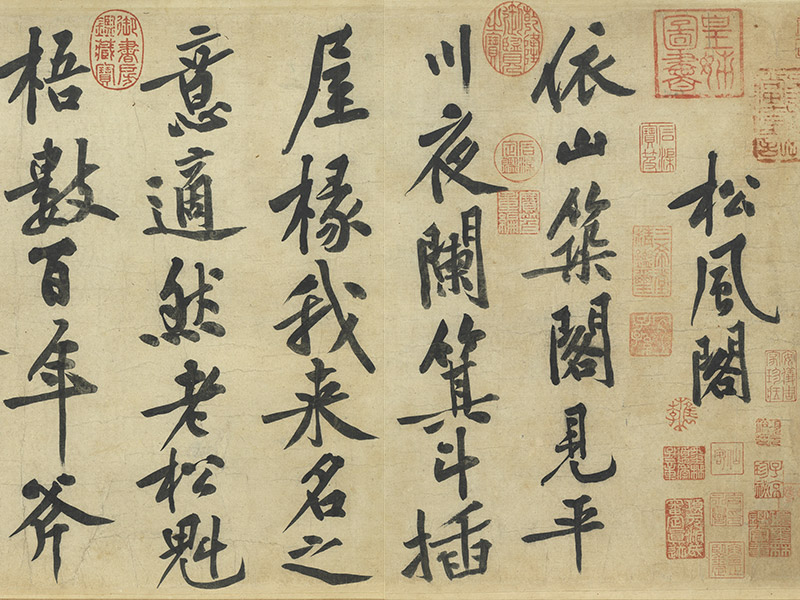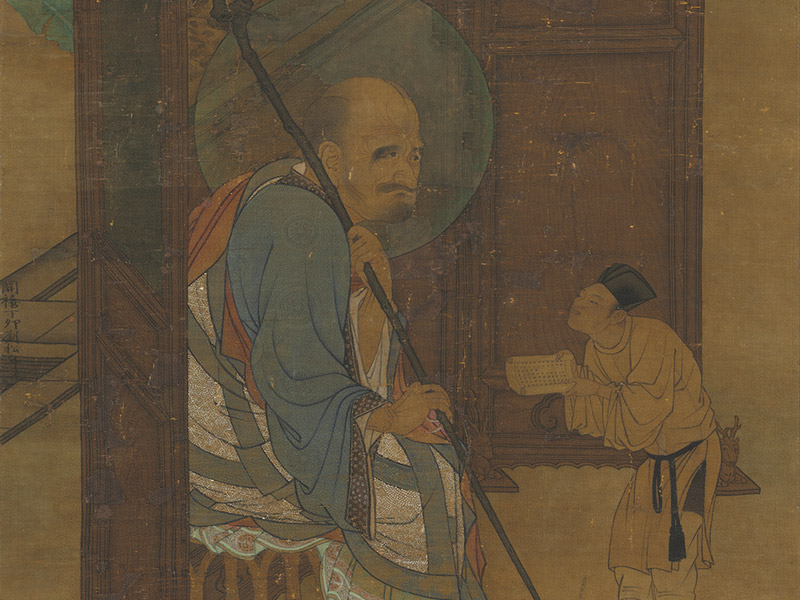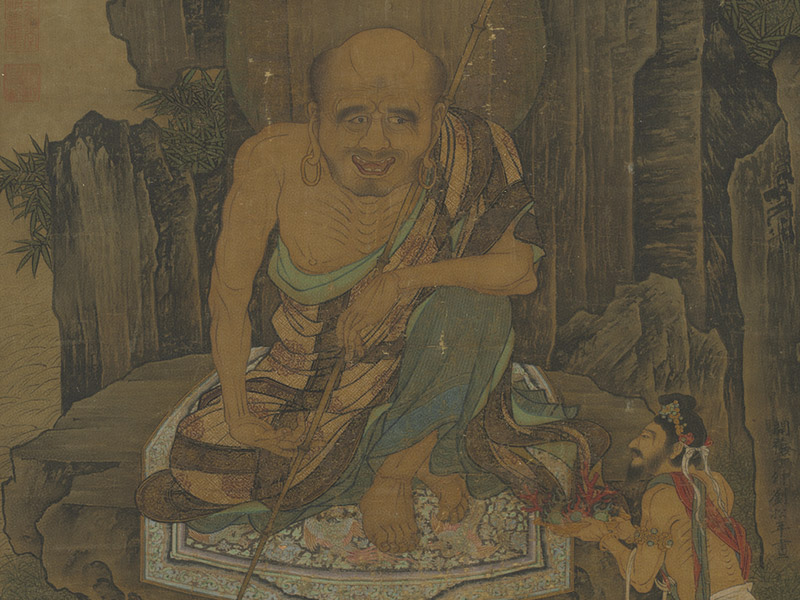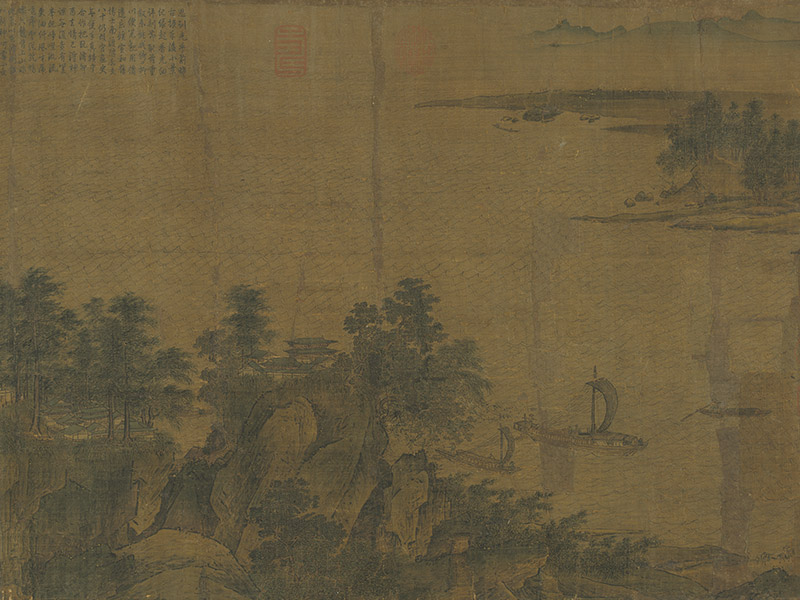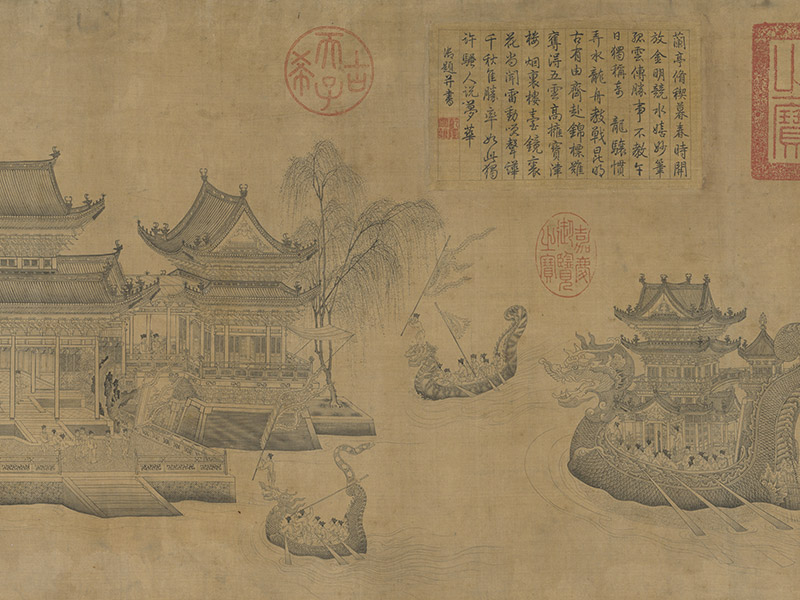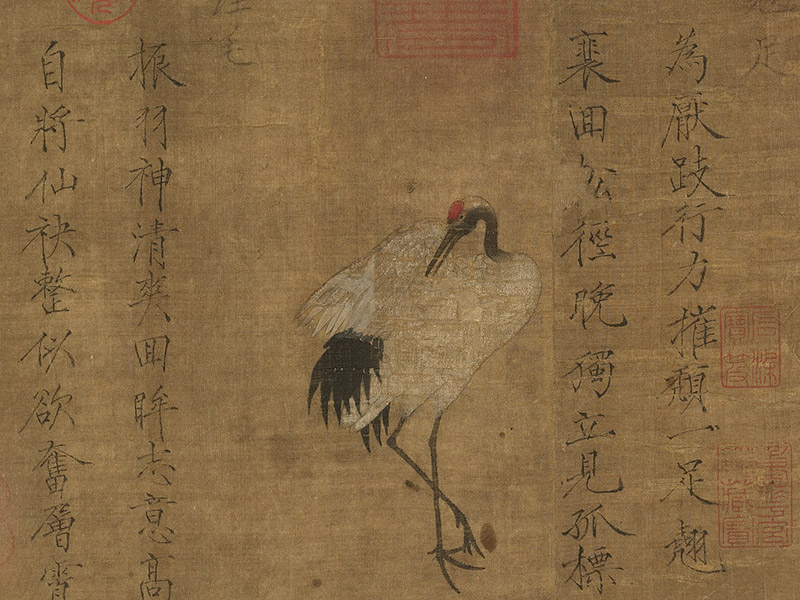"Library of the Imperial Elder Sister (Huangjie tushu)" was a seal impressed on works of Chinese painting and calligraphy in the collection of Princess Sengge Ragi (ca. 1283-1331). Late in spring during the third lunar month of 1323, she held a major elegant gathering patterned after the Chinese tradition established by Wang Xizhi at the Orchid Pavilion some one thousand years earlier. In this case, however, scholar-officials from different ethnic backgrounds were among those invited to appreciate fine works in her collection. A Yuan contemporary and participant in the gathering, the scholar Yuan Jue, recorded 41 works of painting and calligraphy in her possession. And when evidence from inscriptions by other Yuan scholars and surviving works with her seals are taken into consideration, her collection is thought to have included at least fifty artworks. A portion of these are now some of the most treasured examples of Chinese painting and calligraphy in the National Palace Museum collection, the ones selected for this special exhibition also the most representative for expanding our understanding of Sengge Ragi's collection.
One of the "restricted" works in the first rotation is Huang Tingjian's "Poem on the Hall of Wind and Pines," a masterful transcription of his own poetry written while traveling by Wuchang in 1102. The poem records what he saw and nostalgically refers to literati friends who had passed away, including Su Shi. Done in semi-cursive script, the control of brush and ink in the handscroll is unsurpassed, creating characters invigorated yet elegant. In general, it sums up Huang's accomplishments in calligraphy and is a representative example of Northern Song literati art. After this work entered the collection of Princess Sengge Ragi, it was impressed at the front with her seal for "Library of the Imperial Elder Sister." When she held the elegant gathering at Tianqing Temple and invited scholars of different ethnic backgrounds to appreciate works in her collection, this handscroll was among them and inscribed by Li Jiong, Zhang Gui, Wang Yue, Feng Zizhen, and Yuan Jue. From their inscriptions that appear after Huang Tingjian's calligraphy, we can thereby imagine what transpired at her gathering. The rotation replacement for Huang Tingjian's masterpiece is Li Tang's "Intimate Scenery of River and Mountains," which also has a partial collection seal of hers.
The range of painting and calligraphy in Princess Sengge Ragi's collection is considerable. Not only were there famous examples of calligraphy, but also paintings on bird-and-flower and "ruled-line" architectural themes. Those with religious content are also noteworthy. For example, in this exhibition are two hanging scrolls entitled "Lohan" by the Southern Song artist Liu Songnian that are impressed with her "Library of the Imperial Elder Sister" seal. In the tradition of lohan painting, they are exceptional works also expressing the refined style of Southern Song court art. In the princess's collection, the Yuan painter Wang Zhenpeng is one of the few contemporary artists seen; "Dragon Boat Regatta" testifies to his command of "ruled-line" painting.
Poem on the Hall of Wind and Pines
Rotation 1 10/6-11/15
- Huang Tingjian (1045-1105), Song dynasty
- Handscroll, ink on paper, 32.8 x 219.2 cm
The scroll is impressed with a seal for "Library of the Imperial Elder Sister" of Princess Sengge Ragi and followed by a dozen or so inscriptions by Yuan dynasty figures. Among them is Yuan Jue, who viewed the scroll at the princess's literary gathering. This work was thus once in her collection, and textual evidence in the inscriptions also suggests what transpired at the gathering.
Lohan
- Liu Songnian (fl. ca. 1174-after 1195), Song dynasty
- Hanging scroll, ink and colors on silk, 118.1 x 56 cm
In the painting here, the lohan is shown outdoors, not in a rustic setting but what appears to be the corner of a garden. Of particular interest is the depiction of a tripartite folding screen that forms an enclosure for the lohan seated on a round stool. An attendant holding a scripture approaches, his body much smaller than that of the lohan. The composition of this and the other two paintings focuses on creating an axial effect emphasizing the singularity of the lohan.
Lohan
- Liu Songnian (fl. ca. 1174-after 1195), Song dynasty
- Hanging scroll, ink and colors on silk, 117.4 x 56.1 cm
Despite the enormous size of the rock, it does not appear oppressive, in part because the painter treated an area behind the lohan with a halo in lighter colors, thereby lessening its weightiness. The bright colors of the robes and the rug on which he sits also highlight the presence of the lohan, adding liveliness to an otherwise solemn and static background.
Intimate Scenery of River and Mountains
Rotation 2 11/16-12/26
- Li Tang (ca. 1070s-ca. 1150s), Song dynasty
- Handscroll, ink and colors on silk, 49.7 x 186.7 cm
Although the style of this painting is similar to that of Li Tang and his follower, Xiao Zhao, from the late Northern Song to early Southern Song period, the brushwork is actually closer to that of Yan Ciping (fl. late 12th c.), suggesting the work of a second-generation Southern Song artist of the painting academy at court. Records indicate that Princess Sengge Ragi had a work by Xiao Zhao entitled "River and Mountains" in her collection, which is perhaps related to this handscroll.
Dragon Boat Regatta
- Wang Zhenpeng (fl. ca. 1275-1330), Yuan dynasty
- Handscroll, ink on silk, 30.2 x 243.8 cm
At the end of the handscroll is an inscription describing why the work was done: Wang had painted a scroll for Emperor Renzong, which the Princess saw and appreciated, so Wang did another rendition in the form of this scroll. Actually, surviving paintings on dragon boats ascribed to Wang Zhenpeng are quite numerous, but opinions on their dating differ. On this scroll, the seal of the Princess appears different from other examples, suggesting a copy by a later hand.
Solitary Crane
- Attributed to Huizong (1082-1135), Song dynasty
- Album leaf, ink and colors on silk, 25.6 x 28.8 cm
The album leaf also includes the "Imperial calligraphy" cipher and "Xuanhe" joint seals of Huizong with a "Yuesheng" gourd-shaped seal purportedly belonging to Jia Sidao in the late Southern Song. Evidently, an attempt was made to connect this leaf with the anecdote of Huizong painting six cranes. The "slender gold" script here, however, is weak, suggesting an imitation by a later hand. Nonetheless, it serves as an example to imagine the heritage of Emperor Huizong's painting.
